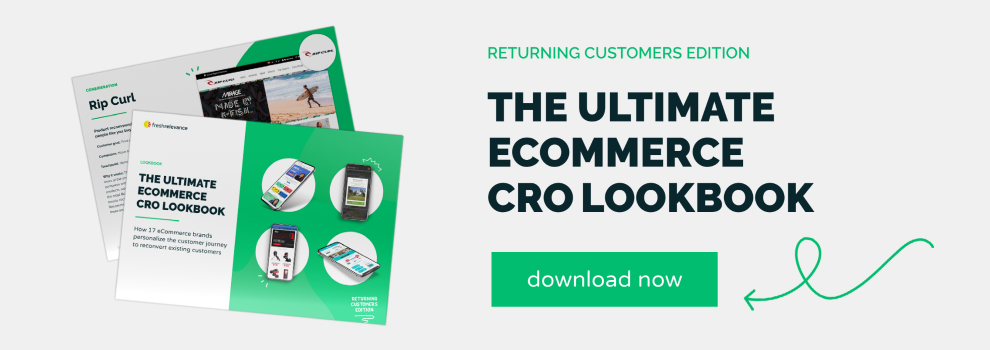Back in 2018, Shopify predicted that eCommerce furniture and appliance revenue would grow to $394 billion by 2022. But with the heightened online demand for homeware during the Covid-19 pandemic, will we end up surpassing Shopify’s prediction?
Our recent Covid-19 eCommerce revenue analysis shows that the online home and garden sector is currently achieving almost 400% of pre-Covid revenue.
But the shift to online also presents new challenges for eCommerce homeware businesses. This sector has traditionally relied on showrooms packed with tempting products for consumers to touch and try out in-store, and knowledgeable sales clerks to guide them towards the right products.
To take advantage of the surge in online demand and succeed in the eCommerce space, homeware businesses will need to reproduce and reinvent that tailored customer experience consumers are used to.
How can they do this?
By using browse and purchase data to put the right products in front of the right people at the right time.
Read on to learn which tactics to use for your own eCommerce homeware store to create seamless, tailored experiences that result in more revenue and happy customers, with real-life examples from five successful homeware businesses.
1) Data capture
The ability to provide a tailored email experience starts with collecting quality email addresses for your database. The use of a pop-up or popover form on your website can contribute to this. In fact, one Fresh Relevance client increased newsletter sign-ups by 333% through targeted popovers.
When implementing pop-ups and popovers, timing and context are key. Your pop-ups and popovers will be most effective when they are prompted by shoppers’ actions and inactions, and should be triggered based on when they will have the most impact, for example at the moment of cart abandonment.
Iconic Lights presents new visitors to their site with a popover offering a discount on their first order when they sign up. This serves two purposes: the visitor identifies themselves with their email address and is tempted to make a purchase.
![]()
Source: iconiclights.co.uk
2) Product recommendations
Product recommendations are a lucrative tactic for any eCommerce business, and can generate sales uplifts of up to 11%. But with many different types of product recommendations to choose from, make sure you select the right tactic for your business and customers.
Including bestsellers on the homepage and category pages can be particularly effective for online homeware stores, as without the ability to see products in the flesh, customers are more likely to be swayed by other shoppers’ opinions.
FFX combines this high-converting social proof and product recommendation tactic on their homepage to inspire website visitors to check out their popular items.
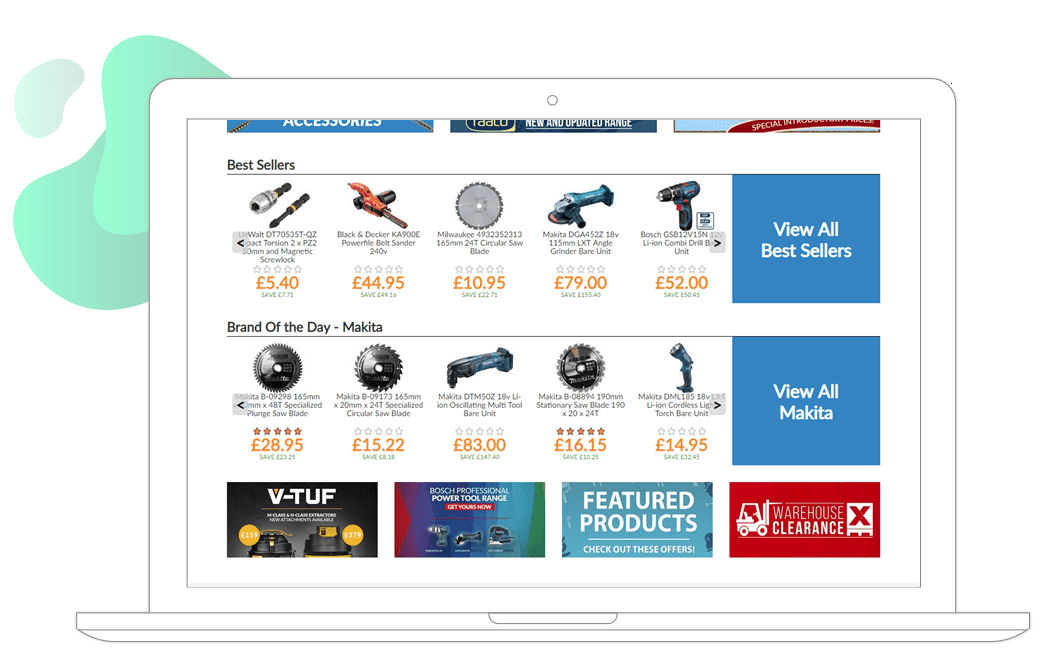
Source: ffx.co.uk
3) Social proof
Speaking of social proof, there are many ways to use this tactic to boost conversions and keep shoppers happy. In fact, including social proof in your eCommerce marketing is proven to boost sales by up to 13%. Here are a couple of ways eCommerce homeware businesses are using social proof.
Scarcity messaging
Displaying scarcity messaging signals to the shopper that this is a high demand product worth purchasing, and the added urgency speeds up the purchasing process and reduces click to purchase rate.
ITS uses live purchasing data to display how many people have a particular product in their shopping cart.
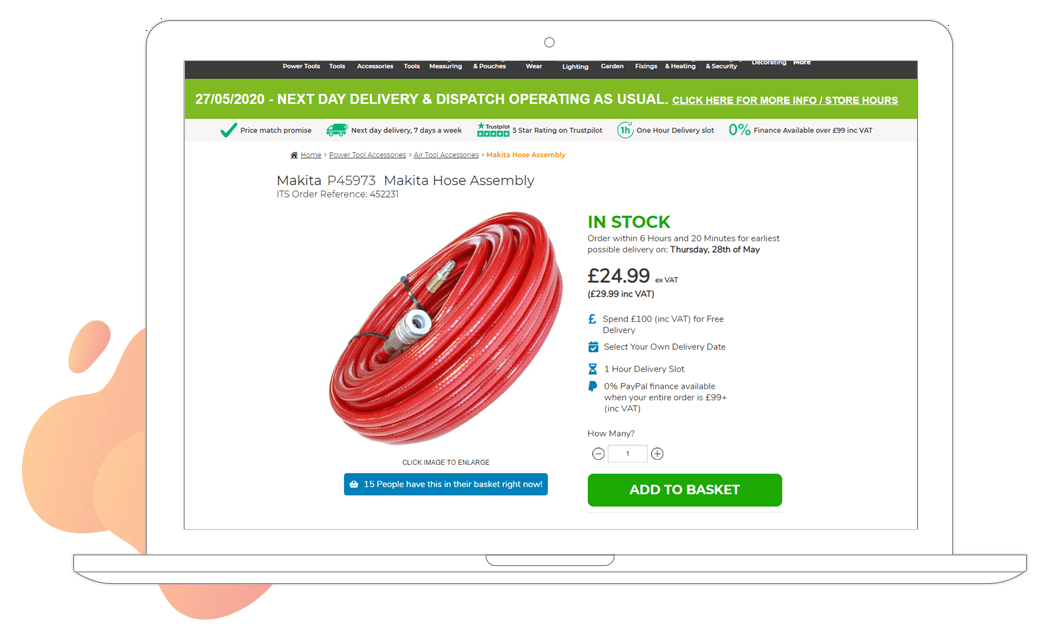
Source: ITS.co.uk
Popularity messaging
Similar to scarcity messaging, popularity messaging is the online version of a large group of customers crowding around one product. Popularity messaging shows online shoppers that the product they are looking at is in demand, playing on the wisdom of the crowd to drive a purchase decision.
Homebase uses popularity messaging alongside product recommendations in their marketing emails.
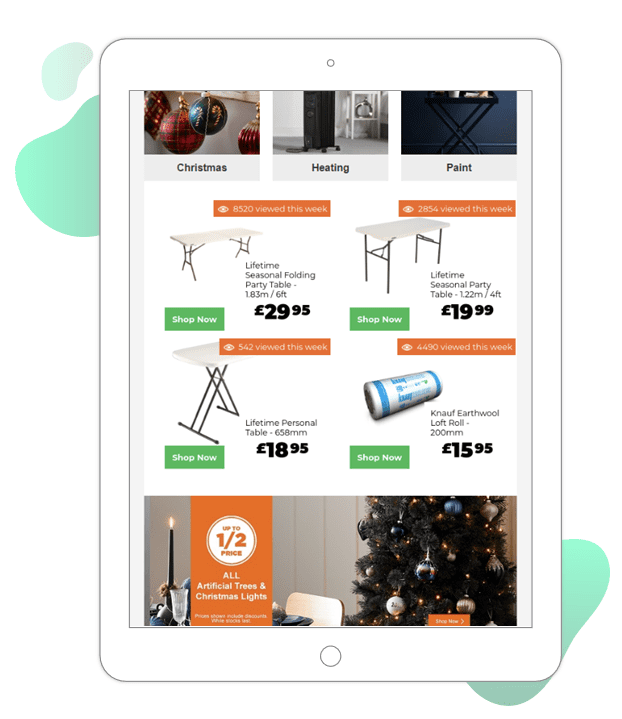
Source: homebase.co.uk
4) Dynamic content
Dynamic content gives marketers the power to personalize every step of the customer journey to an individual’s preferences, behavior and real-time context. Each user sees content that is timely and relevant, which in turn encourages clicks and sales. Here are how two eCommerce homeware businesses are using dynamic content.
Countdown timers
With seasonal sales traditionally driving footfall to showrooms, eCommerce homeware stores need to drive the same excitement and urgency online. Dynamic countdown timers are a great way to do this.
Victoria Plum uses a dynamic countdown timer in their email marketing to draw shoppers’ attention to their sale deadline, increasing urgency and decreasing click to purchase as customers know they have a limited amount of time.
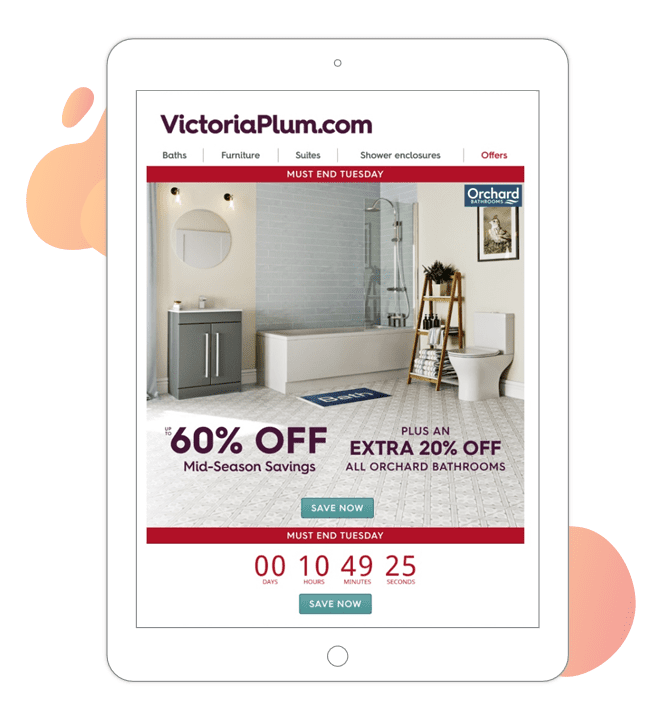
Source: Victoria Plum email
Dynamic pricing
One surefire way to ensure your customer has a terrible experience is to promote out of date discounts in your marketing emails. To make sure customers don’t click through to expired discounts, homeware retailers and brands can use real-time dynamic pricing in marketing emails promoting discounts and deals.
FFX uses real-time dynamic pricing to serve their email recipients with live prices at the time of open, ensuring they only promote deals that are still available on the website. This tactic has paid off for FFX, as the inclusion of dynamic content into their bulk marketing emails has increased their click to open rate from 3% to 25%.
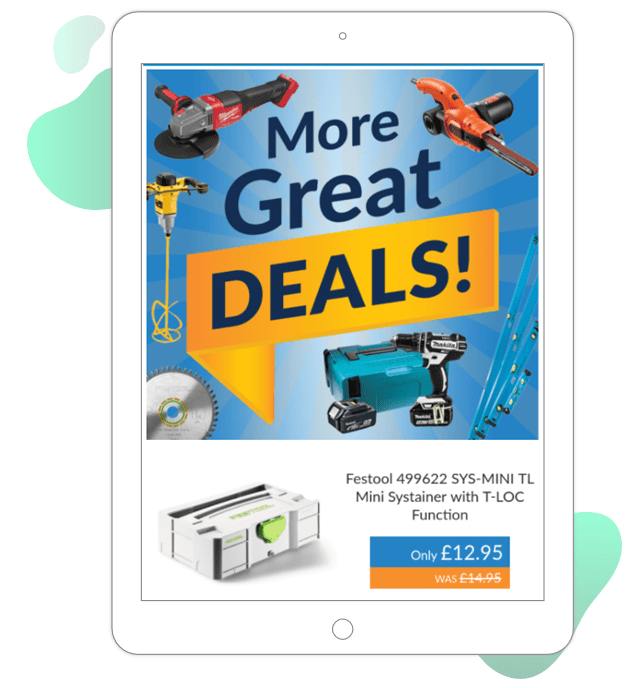
Source: FFX email
5) Triggered emails
Want to deliver personalized, real-time content to shoppers at the moment they are most likely to convert? Make sure you’re using triggered emails. With triggered emails, customers who take a pre-defined action (such as abandoning a shopping cart) are automatically sent an email that nudges them towards a next action (like completing their purchase).
Cart abandonment emails are probably the most well known type of triggered email, and for good reason. They’re a proven revenue booster. In fact, the average Fresh Relevance client doing cart and browse abandonment emails sees a sales uplift of 12%.
Our research shows that over 61% of carts are abandoned. This makes sense, since when shopping online, a plethora of options combined with the inability to touch and try out products means abandoned carts are inevitable. And whilst some shoppers may never return to the checkout, shoppers who got distracted or abandoned to do more research can often be persuaded to return with a cart abandonment email program.
FFX uses dynamic hero banners in their cart and browse abandonment emails, showing customers images based on the make of the carted product and product recommendations from the same manufacturer. The results speak for themselves – the emails achieve an impressive click to open rate of 45%.
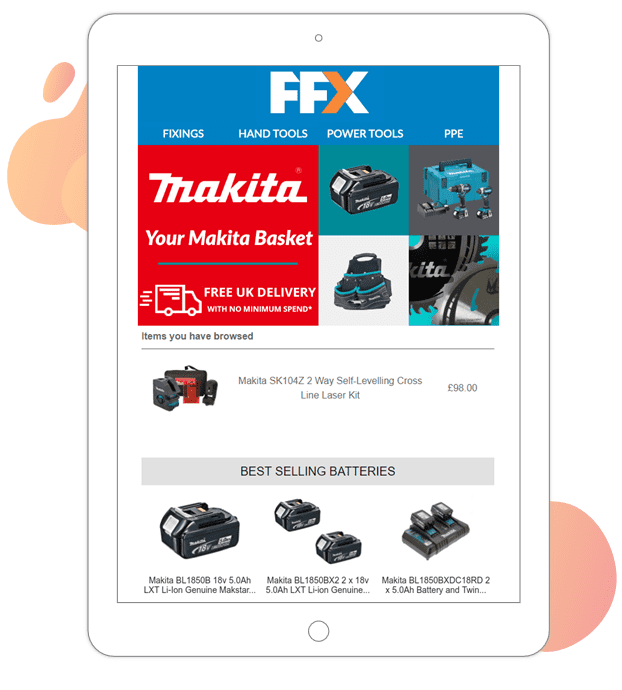
Source: FFX email
For more inspiration check out our Ultimate Ecommerce CRO Lookbook [returning customers edition], packed with 17 real-life eCommerce personalization examples to foster brand loyalty and reconvert existing customers.


